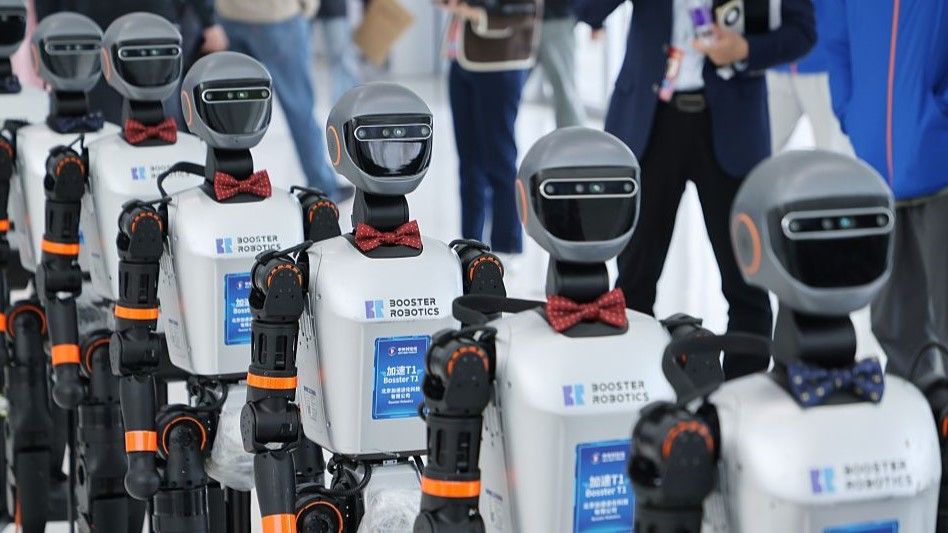North Korea provides first peek inside nuclear weapons facility

China to raise retirement age for first time since 1978, triggering anger among workers
Straight Times,
BEIJING – China will raise the retirement age for the first time since 1978, a move likely to slow a decline in the labour force but which has angered workers already wrestling with a slowing economy.
The country’s top lawmakers endorsed a plan to gradually delay retirement for employees, the official Xinhua News Agency reported on Sept 13.
Men’s retirement age will increase from 60 to 63, while women’s will rise from 50 and 55 to 55 and 58, according to the report.

This change will take place over 15 years, starting on Jan 1, 2025.
“Governments at all levels should actively respond to the ageing of the population, encourage and support the employment and entrepreneurship of workers,” according to the decision by the Standing Committee of the National People’s Congress.
The country’s top legislative body also called on officials to protect workers’ rights and improve eldercare, and it empowered the State Council, China’s Cabinet, to adjust the measures if necessary.
The approval followed a July announcement by the ruling Communist Party of China that the retirement age will rise in a “voluntary, flexible manner”.
North Korea provides first peek inside nuclear weapons facility
Nikkei Asia,
SEOUL — North Korea offered the first public glimpse into its nuclear weapons program Friday through reports of leader Kim Jong Un visiting a uranium enrichment facility, where he signaled plans to further expand its arsenal.
While at the facility, Kim stressed the need to strengthen the foundation for producing weapons-grade nuclear materials, the state-run Korean Central News Agency reported.
North Korea will steadily expand its ability for self-defense and preemptive attacks centered on nuclear weapons, he said.
KCNA also published a photo of Kim between rows of what appear to be centrifuges, which are used to enrich uranium by separating the highly reactive uranium-235 isotopes from the heavier uranium-238.

Uranium-235 makes up around 0.7% of natural uranium. A concentration of 3% to 5% is required for use in nuclear power plants, and typically at least 90% for weapons-grade uranium.
North Korea is believed to process raw uranium from mines at facilities in Pyongsan, in the south, and Pakchon, in the north, and is confirmed to have an enrichment facility in Yongbyon. Siegfried Hecker, a U.S. nuclear physicist who visited the facility in 2010, said there were around 2,000 centrifuges housed there at the time.
The International Atomic Energy Agency in June said North Korea completed construction of a facility in Kangson, near Pyongyang, that shares characteristics with the Yongbyon facility.
KCNA did not give the location of the facility Kim visited.
Plutonium and highly enriched uranium are used in the production of nuclear weapons. While extracting plutonium requires nuclear reactors, highly enriched uranium can be produced in large quantities underground away in secret.
North Korea produces both materials at the Yongbyon complex, and conducted six nuclear tests between 2006 and 2017. Kim signaled plans to expand the number of centrifuges in the country and to introduce new models, according to the Friday report.
Biden administration unveils new evidence of RT’s key role in Russian intelligence operations
CNN,
The Biden administration on Friday announced a major effort to blunt the global influence of RT and expose what it says is the Russian state media network’s key role in the Kremlin’s global intelligence and influence operations.
The State Department revealed declassified US intelligence findings that suggest RT is fully integrated into Russia’s intelligence operations around the world and announced it is launching a diplomatic campaign to provide countries with information about the risks associated with RT activities.

“Thanks to new information, much of which originates from RT employees, we know that RT possessed cyber capabilities and engaged in covert information and influence operations and military procurement,” Secretary of State Antony Blinken said Friday.
A key finding from the new US intelligence is that, for more than a year, the Russian government quietly embedded an intelligence-gathering unit within RT focused on influence operations globally. That activity has been part of US officials described as a big expansion of RT’s role as an arm and mouthpiece of the Kremlin abroad. The activity goes beyond propaganda and covert influence operations to even include military procurement, according to US officials.
“Under the cover of RT, information produced through this unit flows to Russian intelligence services, Russian media outlets, Russian mercenary groups, and other state and proxy arms of the Russian government,” Blinken said.
TikTok’s growing influence, user rights and the highs of Pakistani politics
Dawn,
TikTok in Pakistan is no longer the same so-called ‘cringe’ app it was widely perceived as a few years ago.
It has now deeply pervaded other social media apps — as content creators regularly share their TikTok shenanigans on Instagram, users on Twitter (now X) often stumble across a political edit, and WhatsApp statuses are not spared of the platform’s presence either.
The increase in Pakistan’s young population means that the country’s social media landscape is not only transforming rapidly but also influencing the government’s approach towards it.
Over 30.5 per cent of Pakistan’s population is aged 13 to 29, according to the 2023 census figures published by the Pakistan Bureau of Statistics (PBS). Meanwhile, more than 44pc of eligible voters are aged 18 to 35.

With a youth well aware of the country’s multidimensional crises, the social media they often use is brimming with political discourse and views, which may vex the political dispensation. The current civilian and military leadership have already voiced their concerns multiple times.
TikTok, which has faced four bans within a year over “immoral content”, can hardly afford to be lax when it comes to moderating content on its platform.
Fahad Khan Niazi, the head of public policy and government relations at TikTok Pakistan, briefed Dawn.com about the platform’s moderation process and guidelines in an email interview.
In March, Niazi had met with the minister of state for IT, Shaza Fatima Khawaja, where she had urged TikTok to play an “important role in promoting a positive image of Pakistan”.
Thousands Driven From Their Homes as Floods Hit Myanmar
The Irrawaddy,
At least 11 people were killed and tens of thousands made homeless in severe flooding across Myanmar since Tuesday.
Townships in Mandalay, Bago and Naypyitaw regions and Shan, Karenni, Mon and Karen states were inundated by heavy rain trigged by Typhoon Yagi as it made landfall in Vietnam.
The Myanmar Fire Services Department (MFSD), which is conducting rescue operation, on Wednesday said 10 people from five villages were killed and about 53,927 people displaced by heavy flooding in Yamethin Township in southernmost Mandalay Region.

Flooding also hit townships in the nearby administrative capital of Naypyitaw, trapping hundreds of people in inundated houses.
Several people who were trapped in flooded houses or in trees in Naypyitaw’s Tatkon Township begged for help on Facebook on Wednesday.
“We had no time to move our belongings as water level rose rapidly and had to climb on the roof,” a Naypyitaw resident said. “The floodwaters are very strong, and they were higher than a man.”
The military regime on Thursday announced that rail transport between Yangon and Mandalay would stop temporarily as a railway bridge in Mandalay’s Pyawbwe township .
Moo Deng a global media sensation
Bangkok Post,
Moo Deng, the two-month-old pygmy hippopotamus at Khao Kheow Open Zoo in Chon Buri, is becoming a global media sensation and drawing a growing legion of international fans.
Time magazine on Friday published a glowing tribute, saying Moo Deng had captured the hearts of millions of internet users who had watched videos of her playful nature when being sprayed with water, carried by zookeepers or simply just lying in the sun.
“Meet Viral Baby Hippo Moo Deng: She’s an Icon” the Time headline proclaimed. “She’s a Legend, and She Is the Moment”, said the subheading on the feature accompanied by copious tweets and videos.

Fans in Japan have been producing streams of images of the young hippo, with some baking cakes in her image and others producing artwork to display her features.
Khao Kheow Open Zoo has also rushed to produce shirts and shorts bearing her image so fans can buy them online, and a fan club keeps track of her activities through frequent posts and updates.
According to zoo director Narongwit Chodchoi, Moo Deng spends most of her time sleeping except during bath time, which is between 8am and 9am, and her mother’s feeding time at 2pm.
He also urged visitors not to throw any objects at the little hippo if she is sleeping, in order to keep her safe. The zoo has installed CCTV cameras around the enclosures and would consider legal action to protect its wards, he added.
New mouse models seen to boost cancer drug development
Japan Times,
The National Cancer Center Japan (NCC) has announced the start of a new clinical trial for an anticancer drug prescreened with tumorbearing mice, saying the use of such mouse models could significantly accelerate the nation’s drug development.
The NCC has a collection of patientderived xenograft ( PDX) mouse models called J-PDX, which are immunodeficient mice that have had the live tumor tissues of patients transplanted onto their backs.
NCC researchers say they can examine a drug candidate’s efficacy by using J-PDX mice much more precisely than using cancer “cell lines” — cancer cells cultured in a petri dish. Conventionally, researchers add a drug candidate to such cultured cells to determine its efficacy before they begin a clinical trial.

In the preclinical stage, NCC researchers tested E7820, a chemical compound developed by Japanese drugmaker Eisai, on J-PDX mice bearing various types of tumors, including those of the bile duct, pancreas, stomach and uterus.
The drug succeeded in reducing 30% or more of tumors in 58.3% of the models with bile duct cancer, followed by 55.6% of those with uterine cancer and 33.3% of those with stomach cancer, the scientists reported in a recently published paper.
The J-PDX mice retain many of the characteristics of the patients’ cancer tissues, so the favorable test results obtained through their use mean that E7820 has a high chance of succeeding in clinical trials involving humans, NCC officials said.
In the clinical trial, the scientists will administer two different doses of E7820 to cancer patients who have shown resistance to standard treatments to determine the safe dose.
They will then test the compound on groups of patients with bile tract cancer and uterine cancer.
“This project is very significant in that it not only shows how NCC and Eisai have joined hands to develop a new drug, but also has created a new drug development platform,” said Hiroyuki Mano, director of the NCC’s research institute. “There’s been a lot of talk about Japan’s drug lag and drug loss
problem, but this project could change such a status quo.”






















